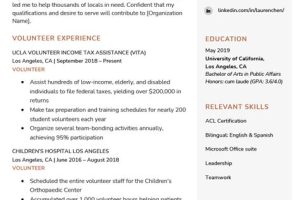Table of Contents
Looking to create a successful volunteer program? This guide will provide you with step-by-step instructions on how to develop a volunteer program, from defining your organization’s needs to recruiting and training volunteers. Discover effective strategies and tips for managing and retaining volunteers, ensuring your program’s long-term success. Start building a strong and engaged volunteer team today!
Are you passionate about making a difference in your community? Do you want to create positive change and help those in need? Developing a volunteer program can be the perfect avenue for you to channel your enthusiasm and dedication. By organizing a structured and impactful volunteer program, you can maximize your efforts in addressing various social issues and drive meaningful change. In this guide, we will walk you through the essential steps and strategies to develop a successful volunteer program that not only benefits the community but also provides a rewarding experience for volunteers. So, if you are ready to embark on this fulfilling journey of giving back, let’s dive in and explore the key elements of building an effective volunteer program.
Introduction
In order to build a successful volunteer program, organizations need to have a clear plan in place. Developing a volunteer program requires thoughtful consideration and strategic planning. By following a few key steps, organizations can create a volunteer program that is effective, well-organized, and mutually beneficial for both the volunteers and the organization they serve.
Evaluate Your Organization’s Needs
The first step in developing a volunteer program is to assess your organization’s needs. Determine what tasks or projects could benefit from volunteer assistance. Are there areas within your organization that are understaffed or under-resourced? Identifying these specific needs will help you create volunteer roles that align with your organization’s goals and objectives.
Define Clear Volunteer Roles
Once you have identified the areas where volunteers can make a meaningful impact, it’s important to define clear volunteer roles. Clearly outline the responsibilities, expectations, and time commitments for each role. This will help potential volunteers understand what is expected of them and ensure that their skills and interests align with the tasks at hand.
Recruit Volunteers
Recruiting volunteers is a crucial step in developing a volunteer program. Start by spreading the word about your volunteer opportunities through various channels such as social media, community bulletin boards, and local organizations. Additionally, consider partnering with schools, universities, or other community groups to reach a wider audience. Make the recruitment process simple and easy for potential volunteers by providing clear instructions on how to apply or express interest.
Screen and Train Volunteers
Once you have received applications from potential volunteers, it’s essential to screen them to ensure they are the right fit for your organization. Conduct interviews or background checks if necessary, and ask for references to validate their skills and experience. Once selected, provide thorough training to familiarize volunteers with your organization’s values, policies, and procedures. This will help them feel more confident and prepared in their roles.
Create a Supportive Environment
A successful volunteer program requires creating a supportive environment where volunteers feel valued and appreciated. Regularly communicate with volunteers, provide feedback on their performance, and recognize their contributions. Foster a sense of community by organizing team-building activities or social events that allow volunteers to connect with one another and share their experiences.
Provide Ongoing Supervision
Even though volunteers work on a voluntary basis, it is important to provide ongoing supervision to ensure their tasks are completed effectively. Assign a staff member or supervisor to oversee volunteers and be available to answer questions or address any concerns they may have. Regular check-ins and evaluations will help maintain accountability and ensure that volunteer work aligns with organizational standards.
Evaluate and Improve
Regularly evaluate the effectiveness of your volunteer program and make improvements as needed. Collect feedback from both volunteers and staff to identify areas for growth and enhancement. Use this feedback to refine volunteer roles, training programs, and overall program structure. Continuous improvement will help ensure the long-term success and sustainability of your volunteer program.
Express Gratitude and Recognition
Volunteers dedicate their time and skills to contribute to your organization’s mission, so expressing gratitude and recognition is essential. Show appreciation through personalized thank-you notes, certificates of recognition, or public acknowledgments. A simple gesture can go a long way in fostering a positive relationship with your volunteers and encouraging their continued commitment.
Build Long-Term Relationships
Finally, aim to build long-term relationships with your volunteers. Cultivate an environment that encourages their continued involvement by offering opportunities for professional development, mentorship, or leadership roles within the organization. Building strong relationships with volunteers will not only benefit your organization but also create a sense of loyalty and dedication among your volunteers.
Conclusion
Developing a volunteer program requires careful planning, effective recruitment, and ongoing support. By following these steps and continuously improving your program, you can create a fulfilling volunteer experience that benefits both your organization and the volunteers themselves. Remember, a well-developed volunteer program can be a powerful asset in achieving your organization’s goals and making a positive impact in your community.
Determining your organization’s needs
In order to develop a successful volunteer program, it is crucial to first assess your organization’s specific goals and objectives. Take the time to determine which areas within your organization could benefit from volunteer assistance. Consider the tasks, skills, and time commitments required for each volunteer position. This will help you identify the specific needs that volunteers can fulfill and ensure that their contributions align with your organization’s mission.
Establishing clear goals and objectives
Once you have determined your organization’s needs, it is important to set clear goals and objectives for your volunteer program. Use the SMART (specific, measurable, achievable, relevant, and time-bound) framework to guide your program’s development. Clearly define the outcomes and impact you hope to achieve through volunteer involvement. This will provide a roadmap for your program and help you measure its success.
Outlining volunteer roles and responsibilities
To ensure that volunteers understand their roles and responsibilities within your organization, it is essential to clearly define these expectations. Create detailed position descriptions that outline required skills, time commitments, and any necessary training. This will help volunteers understand what is expected of them and allow them to make informed decisions about their involvement.
Recruitment and screening
Developing a systematic process for recruiting and screening potential volunteers is vital for building a successful volunteer program. Utilize various channels such as social media, websites, and community outreach to attract a diverse pool of applicants. Once you receive applications, conduct interviews, reference checks, and background screenings to select qualified volunteers. This thorough screening process will help ensure that you bring in volunteers who are committed, reliable, and aligned with your organization’s values.
Training and orientation
Providing comprehensive training to volunteers is essential for their success within your organization. Develop a training program that equips volunteers with the necessary knowledge and skills to perform their roles effectively. This may include on-the-job training, workshops, or online resources. Additionally, create an orientation process to familiarize volunteers with your organization’s mission, values, and policies. This will help them understand the context in which they will be working and ensure that they are prepared to contribute meaningfully.
Volunteer recognition and retention
In order to maintain a positive volunteer experience and encourage retention, it is important to establish a recognition program. Acknowledge and appreciate volunteers’ contributions by implementing strategies such as volunteer appreciation events, certificates, and personal thank-you notes. Recognizing volunteers for their hard work and dedication will not only make them feel valued but also motivate them to continue supporting your organization.
Effective communication and supervision
Maintaining open lines of communication with volunteers is crucial for a successful volunteer program. Provide regular updates, newsletters, and feedback on their performance to keep them informed and engaged. It is also important to establish a clear chain of command and assign supervisors who can provide guidance, support, and address any concerns or issues that may arise. A strong communication and supervision structure will help foster a positive volunteer experience and ensure that volunteers feel supported in their roles.
Evaluation and improvement
Lastly, it is essential to develop a system to evaluate the effectiveness of your volunteer program periodically. Seek feedback from volunteers, staff, and beneficiaries to gain insights into the program’s strengths and areas for improvement. Use this feedback to implement necessary changes and enhancements that will enhance the program’s impact and effectiveness over time.
Point of View: How to Develop a Volunteer Program
As an expert in volunteer program development, I understand the importance of establishing a well-structured and effective volunteer program that meets the needs of both the organization and the volunteers. By implementing a professional voice and tone, we can guide organizations towards successfully developing their own volunteer programs. Here are some key points to consider:
- Identify organizational goals: Begin by clearly defining the goals and objectives of the organization. This will help determine the specific areas where volunteers can contribute and make a meaningful impact.
- Conduct a needs assessment: Assess the current needs of the organization and identify tasks that can be delegated to volunteers. This will help create a comprehensive list of volunteer positions and establish the necessary requirements for each role.
- Create volunteer positions: Develop clear and concise job descriptions for each volunteer position. Clearly outline the responsibilities, time commitment, skills required, and any training provided. This will attract individuals who are genuinely interested and qualified for the roles.
- Recruit and screen volunteers: Implement a strategic recruitment process to attract potential volunteers. Utilize various channels such as social media, websites, and community networks to promote the volunteer opportunities. Screen volunteers through interviews, reference checks, and background checks to ensure suitability and safety.
- Provide orientation and training: Develop a comprehensive orientation program to familiarize volunteers with the organization’s mission, values, policies, and procedures. Provide necessary training to equip volunteers with the knowledge and skills required to excel in their roles.
- Establish clear communication channels: Maintain open lines of communication with volunteers through regular meetings, newsletters, and online platforms. Encourage feedback and suggestions to continuously improve the volunteer program.
- Recognize and appreciate volunteers: Implement a recognition program to acknowledge the contributions and dedication of volunteers. This can include certificates, awards, public recognition, or even small tokens of appreciation. Recognizing volunteers will boost morale and encourage long-term commitment.
- Evaluate and improve: Regularly assess the effectiveness of the volunteer program through feedback surveys, volunteer performance evaluations, and impact assessments. Use this feedback to identify areas for improvement and implement necessary changes to enhance the program’s overall success.
By following these steps and maintaining a professional voice and tone throughout the development process, organizations can establish a volunteer program that attracts dedicated individuals and maximizes their impact. Remember, a well-structured volunteer program not only benefits the organization but also offers a rewarding experience for volunteers who are passionate about making a difference in their community.
Thank you for taking the time to visit our blog and learn about how to develop a volunteer program. We hope that the information provided has been helpful and insightful, and that you are now equipped with the knowledge and tools necessary to create a successful program of your own.
Developing a volunteer program requires careful planning and consideration, but the rewards are immeasurable. By engaging volunteers, you not only provide valuable assistance to your organization or cause, but also create a sense of community and make a positive impact on the lives of those involved. Whether you are starting from scratch or seeking to improve an existing program, the steps outlined in this article can serve as a useful guide.
Remember, the key to a successful volunteer program is to clearly define your goals and objectives, recruit and train volunteers effectively, and provide ongoing support and recognition. Additionally, it is essential to establish clear communication channels and feedback mechanisms to ensure that volunteers feel heard and valued. By implementing these strategies, you will not only attract dedicated individuals but also foster long-term commitment and loyalty.
In conclusion, developing a volunteer program is a rewarding endeavor that can bring significant benefits to your organization or cause. It allows you to tap into the skills and passion of individuals who are willing to contribute their time and energy to make a difference. By following the guidelines discussed in this article, you can create a program that is both effective and sustainable, ultimately leading to the success of your mission. Good luck on your journey, and we hope to see you again soon!
Video How To Develop A Volunteer Program
People also ask: How To Develop A Volunteer Program?
What are the key steps to develop a volunteer program?
- Identify your organization’s needs and goals
- Create a clear mission statement for your volunteer program
- Recruit volunteers who align with your organization’s mission and values
- Design volunteer roles and responsibilities
- Provide proper training and orientation for volunteers
- Establish effective communication channels with volunteers
- Recognize and appreciate volunteers for their contributions
- Evaluate and improve your volunteer program regularly
How can I recruit volunteers for my program?
- Advertise volunteer opportunities on your organization’s website and social media platforms
- Reach out to local community organizations, schools, and universities
- Collaborate with corporate partners or businesses that promote volunteerism
- Utilize online volunteer recruitment platforms or databases
- Attend community events or fairs to connect with potential volunteers
How important is training and orientation for volunteers?
What strategies can I use to recognize and appreciate volunteers?
- Publicly acknowledging volunteers’ achievements through newsletters, websites, or social media
- Organizing volunteer appreciation events or ceremonies
- Providing certificates, awards, or tokens of appreciation
- Creating a supportive and positive environment where volunteers feel valued
- Offering ongoing opportunities for personal and professional development
How can I evaluate and improve my volunteer program?
- Collecting feedback from volunteers through surveys or interviews
- Tracking volunteer performance and impact on organizational goals
- Regularly reviewing program outcomes and adjusting strategies accordingly
- Soliciting input from staff members and stakeholders
- Comparing your program with best practices in volunteer management
Developing a volunteer program involves several key steps:
Recruiting volunteers can be done through various channels:
Training and orientation are crucial for ensuring volunteers understand their roles, responsibilities, and organizational expectations. It helps them feel prepared, confident, and engaged in their volunteer work. Through training, volunteers also gain necessary skills and knowledge to effectively contribute to the program’s objectives.
Recognizing and appreciating volunteers is essential for maintaining their motivation and commitment. Some strategies you can use include:
Evaluating your volunteer program allows you to assess its effectiveness and identify areas for improvement. Some evaluation methods include:






